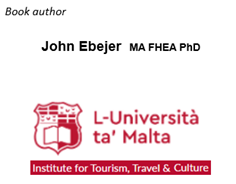Cities are in constant change due to various social and economic forces, including tourism and cities’ constant drive to make themselves more attractive for visitors. The book debates the relationship between tourism activity and the architecture and built environment within which it takes place. Tourism activity is reliant on the facilities and resources that the city offers. The book gives an overview of the various resources that make up a city’s tourism product.
